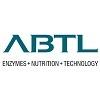
Content sponsored by:
ABTL Advanced Bio-Agro Tech Ltd
Xylanase with Optimal Energy Release - XylaOpt™
Published: July 27, 2022
Related topics:
Authors:
ABTL Advanced Bio-Agro Tech Ltd
Recommend
Comment
Share
9 de febrero de 2023
Xylanase enzyme in Poultry feed improves gut health and enhances flock productivity .??
1. Xylans are the most prevalent type of NSP in poultry feed grains, representing up to 43% of the total NSP content.
2. Research confirms that 450-500 kcal/kg of valuable energy in a typical poultry diet is not digestible. ?
a) The addition of enzyme feed additives has been shown to make up to 30% (135 kcal/kg) of this energy digestible (Cowieson, 2010). ??
3. Xylanase enzymes hydrolyze glycosidic bonds in xylans that make up cell walls, resulting in the release of the encapsulated nutrients.??
4. Feed enzyme appli- cation in diets for poultry is also one of the most researched fields in poultry science today, with over 2 500 independ- ent enzyme trials conducted with broilers alone (Rosen, 2010).??
5. Energy is usually the most expensive nutritional component of poultry diets.
a) Therefore, a higher efficiency in its utilisation will result in lower feed cost.?
6. Feed digestion occurs mainly in the small intestine of poultry (duodenum, jejunum, ileum) as evidenced by the amount of time the digesta material remains in these areas of the bird’s gut.
a) The majority of absorption of nutrients also occurs in the small intestine due to the presence of a higher number of villi, the site of nutrient absorption.
b) For any enzyme to deliver maximum results, it needs to work optimally at the 5.7-7.0 pH range occurring in the small intestine (Sturkie, 2000).
c) In the field of nutrition and food technology, the most significant aspects will be the use of enzymes, the evaluation of non-nutritional factors, which may maximise ingredient utilisation by the birds.
7. Enzymes will be increasingly used,
a) as they improve ingredient digestibility and nutrient absorption (Cowan et al., 1996),
b) as well as reduce the detrimental effects of anti-nutritional factors, thereby allowing higher flexibility in the use of feedstuffs as well as reducing feed costs (Ferket, 2009)
c) and pollutant excretion in animal waste (Penz-Jr and Bruno, 2010).
d) In addition enzymes lowers feed costs, this will also reduce nitrogen excretion in the environment (Nahm, 2002).??
8. A highly viscous composition of the digested material in the bird’s intestine causes a decrease in the passage rate through the gastrointestinal tract.
a) As a result, nutrient diffusion and absorption in the foregut is reduced, and unabsorbed nutrients are allowed to enter the hindgut where they facilitate the proliferation of detrimental bacteria.
b) High digesta viscosity further impairs poultry nutrition by reducing feed intake.
9. Xylanase improves gut health in poultry and is a Energy Booster and has ability to improve digestibility of plant-based feed ingredients and to reduce digesta viscosity is well-accepted.??
a) Xylanase appear to be partially related to their indirect impact on mucosal morphology of the small intestine of birds.
10. In the intestine, undigested NSPs, including arabinoxylans, stimulate the proliferation of pathogenic bacteria
a) Xylanase reduces nutrient availability for cecal pathogens
and it not only reduces digesta viscosity through the hydrolysis of soluble arabinoxylans in the small intestine;
11. This process can also improve gut health by generating xylo-oligosaccharides (XOS), which are fermented, particularly in the foregut.
a) These have a prebiotic effect that selectively stimulates the growth of beneficial gram-positive bacteria in the foregut .??
b) This greater level of beneficial microbial activity and growth in turn boosts production of volatile fatty acids, which can then be absorbed and utilised by the animal as an energy source.
12. Xylanase reduces oxidative stress in the gut and It reduces mucin secretion.
a) Mucin is an excellent nutrient source for some pathogenic bacteria such as E. coli and Clostridium perfringens.??
b) Necrotic Enteritis, characterized by Clostridium perfringens, costs the global poultry industry about $2 billion annually (Ducatelle and Immerseel, 2010).
c) Necrotic Enteritis causes necrotic lesions in the intestinal tract, poor digestion, reduced weight gain, increased FCR, and even death.
13. Xylanase significantly reduces wet litter.??
a) Xylanase improves laying performance in layers , Breeders and boosts energy in Broilers.
14. Xylanase improves flock uniformity and also reduces the impact on feedstuff variability.
To maximize release of encapsulated nutrients in feed grains, the correct type of xylanase enzyme is required.?
15. XylaOpt of ABTL is a Themostable Xylanase enzyme feed additive which minimizes gut viscocity and reduce wet litter.??
16. XylaOpt enhances significantly laying performance of Layers , Breeders and Broilers.??
a) The recommended inclusion levels of XylaOpt is 100 gms to 150 gms / ton of feed .??
Dr V. Rajendra Prasad
Recommend
Reply
ABTL Advanced Bio-Agro Tech Ltd
28 de julio de 2022
The poultry industry is one of the most dynamic industries in world of agri-business, and feed is the backbone of this industry. But, with rising feed ingredients cost, making a good quality feed at low price has become a challenge for the poultry industry. To minimize the impact of rising prices of conventional feed ingredients, the other option is the use of unconventional raw materials. Many of these products contain high levels of plant cell wall (non starch polysaccharides) (NSPs), which cannot be digested by the endogenous enzymes, but we can overcome this problem by supplementing exogenous NSPase as per the raw material in poultry feed.
The logical solution is to somehow degrade NSP, and this is done by adding NSPase enzyme especially xylanase enzyme. The xylanase enzyme degrades the arabinoxylan component of feed and releases energy. (80-120 Kcal ME/Kg).
XylaOpt product of ABTL is an intrinsically thermostable, pepsin resistant, xylanase enzyme with optimal pH activity (5.6-7.0 pH) profile that targets the arabinoxylan fraction of NSP which is an endo-1,4-ß-xylanase, improves digestion and reduces production costs by releasing nutrients, reducing digesta viscosity and the production of excessive secretion into the gut.
XylaOpt inclusion at 100g/ton provides up to 105-115 Kcal ME/Kg in corn SBM based diet. Depending upon the feed composition higher energy release might also be possible.
Recommend
Reply

Would you like to discuss another topic? Create a new post to engage with experts in the community.



.jpg&w=3840&q=75)